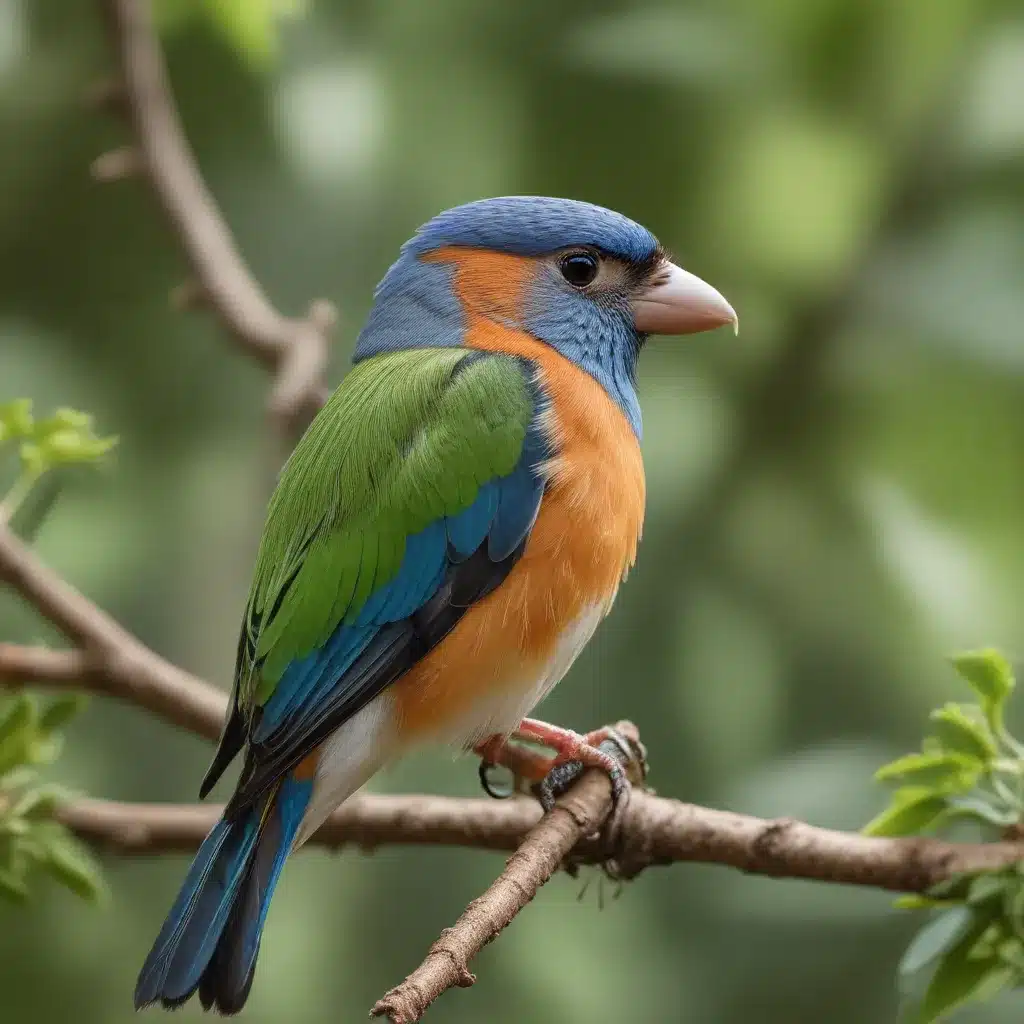
As an experienced avian caretaker, I’ve learned that creating a stimulating and enriching environment is essential for the well-being of our feathered companions. Birds are inherently curious and highly sensitive creatures, with complex sensory capabilities that shape their perceptions and behaviors. By thoughtfully designing their living spaces to engage their sights, sounds, and smells, we can foster a true “sensory sanctuary” that caters to their natural instincts and promotes overall health and happiness.
Avian Sensory Experiences
Sight Enrichment for Birds
Visual Stimuli for Feathered Friends
Sight is a dominant sense for most bird species, and providing visually engaging elements in their habitat can have a profound impact. Incorporate a variety of colors, textures, and patterns to stimulate their natural curiosity and encourage exploration. Hang colorful toys, hang mirrors at different levels, or place perches near windows to allow them to observe the ever-changing outdoor scenery. Rotate these visual elements periodically to prevent boredom and maintain their interest.
Captivating Colors and Patterns
Birds’ visual systems are quite different from our own, allowing them to perceive a wider range of colors and ultraviolet light. Take advantage of this by incorporating vibrant, contrasting hues that appeal to their unique visual capabilities. Strategically placed flowering plants, vivid bird-safe artwork, or even reflective surfaces can create a visually captivating environment. Experiment with different patterns, shapes, and movement to further captivate your feathered friends.
Sound Stimulation for Birds
Auditory Cues and Audition
Hearing is another vital sense for birds, as they use auditory cues for communication, navigation, and perceiving their environment. Provide a variety of sound-producing toys, chimes, or nature-inspired audio recordings to stimulate their senses. Be mindful of volume and duration, as excessive noise can be stressful. Gradually introduce new sounds and observe your bird’s reactions to find the right balance.
Soothing Soundscapes
In addition to stimulating sounds, consider incorporating calming audio elements to promote relaxation and reduce stress. Research has shown that certain types of music, such as classical or nature-inspired compositions, can have a soothing effect on birds. Experiment with different genres and volume levels to find what resonates best with your feathered friend.
Olfactory Engagement for Avians
Scent Exploration for Birds
While often overlooked, the sense of smell plays a significant role in a bird’s experience of their environment. Introduce safe, bird-friendly scents to pique their curiosity and enhance their sensory exploration. Consider placing fragrant herbs, flowers, or essential oil diffusers in their habitat, being mindful of any potential allergies or sensitivities.
Aromatic Avian Environments
Beyond individual scents, you can create a multidimensional olfactory experience by incorporating a variety of aromas throughout your bird’s living space. This could include setting up “scent stations” with different herbs, spices, or floral elements for them to investigate. Observe their reactions and adjust the scents accordingly to find the perfect balance.
Holistic Habitat Design
Integrating Sensory Elements
Optimizing Multisensory Experiences
When designing your bird’s habitat, strive to create a harmonious blend of visual, auditory, and olfactory stimuli. Carefully consider how these various sensory elements can work together to provide a truly immersive and engaging environment. Experiment with different combinations and placements to find the optimal sensory balance for your feathered friend.
Enriching the Avian Abode
Customizing the Bird’s Sanctuary
No two birds are alike, and their individual preferences and needs should be the guiding principle when creating their sensory sanctuary. Carefully observe your bird’s behaviors and reactions to different stimuli, and tailor your habitat accordingly. This may involve adjusting the lighting, rearranging perches, or incorporating new scents to cater to their unique sensory preferences.
Avian Behavioral Benefits
Enhancing Welfare and Well-Being
Promoting Natural Behaviors
By addressing the sensory needs of your bird, you can encourage the expression of their natural behaviors, such as foraging, exploring, and socializing. A stimulating environment that engages their senses will help fulfill their innate drive to interact with their surroundings, leading to improved overall well-being and reduced risk of behavioral issues.
Stress Reduction and Mental Stimulation
Fostering Positive Bird Emotions
Sensory enrichment can also play a crucial role in reducing stress and promoting positive emotional states in your bird. Providing calming sensory experiences, such as soothing sounds or familiar scents, can help alleviate anxiety and create a sense of security and comfort. Conversely, engaging their curiosity and problem-solving skills through novel sensory stimuli can enhance mental stimulation and prevent boredom.
Responsible Avian Husbandry
Considerations for Captive Birds
Addressing Species-Specific Needs
When designing a sensory-rich environment for your bird, it’s essential to consider their specific species requirements. Different bird families and individual species may have unique sensory preferences and adaptations. Research your bird’s natural habitat and behaviors to ensure that you are providing the appropriate sensory elements that cater to their specific needs.
Ethical Avian Enrichment Practices
Prioritizing Bird Health and Safety
As you incorporate sensory enrichment into your bird’s habitat, always prioritize their health and safety. Carefully select bird-safe materials, avoid potential allergens or toxins, and ensure that any introduced elements cannot pose a physical hazard. Regularly monitor your bird’s responses and make adjustments as needed to maintain a secure and enriching environment.
Creating a “sensory sanctuary” for your bird is a rewarding and ongoing process that requires a deep understanding of their unique sensory capabilities and natural behaviors. By thoughtfully integrating visual, auditory, and olfactory elements into their habitat, you can unlock a world of discovery, stimulation, and joy for your feathered companion. Embrace the opportunity to cater to their senses and witness the positive impact it has on their overall well-being. For more information on creating enriching environments for your birds, I encourage you to visit Mika Birds Farm and explore their wealth of avian expertise and resources.


